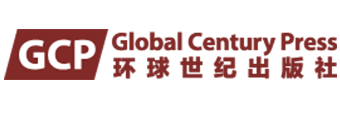法国后现代主义思想家米歇尔·福柯的话语权力理论揭示了“话语”作为一种社会实践所具有的建构功能和权力特征,语言作为反映社会现实的载体与权力﹑社会﹑意识形态联系了起来。这一建构性的话语理论使人文﹑社会科学许多学科受到启发,加以研究。自上世纪80年代后期,媒体话语作为使用中的语言以及其特殊的篇章结构和社会文化实践受到语言学家关注。一些分析方法应运而生,批判话语研究便是其中之一,起源于上世纪80年代,随着大量研究的展开,人们发现只凭单个语篇进行分析远远不能回答研究问题,且分析会带入个人偏见,为了使研究更全面可靠,人们开始使用语料库的方法来考察大规模的文本,两者各有其优势,互相取长补短。近10年来基于语料库的批判话语研究越来越多地被中国社会科学学者所采用,本书聚焦中英美三国主流报刊2000年以来关于低碳的报道,分析围绕低碳的话语建构,较系统地将语料库和批判话语分析的方法用于媒体话语分析中,将定性和定量研究有效结合起来。语料库提供的语言例证是凭直觉的研究方法所不能及,批判话语研究分析的方法又使语料库所提供的例证变得清晰明了。我们从词频信息中发现许多有趣的有待进一步考察的现象;研究表明词丛﹑搭配词分析伴随着语料库检索来考察其上下文中的分析为定量的分析增添了定性的成份,使结果更可靠﹑更全面。将语料库的发现和社会情境相结合使我们更清晰地认识到话语是意识形态的反映。本研究抛砖引玉,希冀更多的学者将此方法用于社会科学领域与语言相关的研究中。
The discourse power theory of Michel Foucault, a French postmodernist thinker, reveals the constructive function and power characteristics of “discourse” as a social practice. Language, as a carrier reflecting social reality, is associated with power, society and ideology. This constructive discourse theory enlightens and studies many disciplines of Humanities and social sciences. Since the late 1980s, media discourse has attracted linguists’ attention as a language in use, as well as its special textual structure and social and cultural practice. Some analytical methods have emerged at the historic moment, and critical discourse research is one of them. It originated in the 1980s. With the development of a large number of studies, people find that it is far from possible to answer research questions only by analyzing a single text, and that analysis will bring personal prejudice. In order to make the research more comprehensive and reliable, people begin to use corpus. The method of studying large-scale texts has its own advantages and draws on each other’s strengths to complement each other’s weaknesses. In the past 10 years, corpus-based critical discourse research has been increasingly adopted by Chinese social scientists. This book focuses on the reports on low-carbon in the mainstream newspapers and periodicals of China, Britain and the United States since 2000. It analyses discourse construction around low-carbon, and systematically applies corpus and critical discourse analysis to media discourse analysis. Combine qualitative and quantitative research effectively. The linguistic examples provided by corpus are beyond the intuitive research method, and the critical discourse analysis method makes the examples provided by corpus clear. We find many interesting phenomena that need to be further investigated from word frequency information. Studies show that the analysis of word clusters and collocations, accompanied by corpus retrieval, adds qualitative elements to quantitative analysis and makes the results more reliable and comprehensive. The combination of corpus findings and social context makes us realize more clearly that discourse is the reflection of ideology. This study is expected to attract more scholars to apply this method to language-related research in the field of social sciences.




